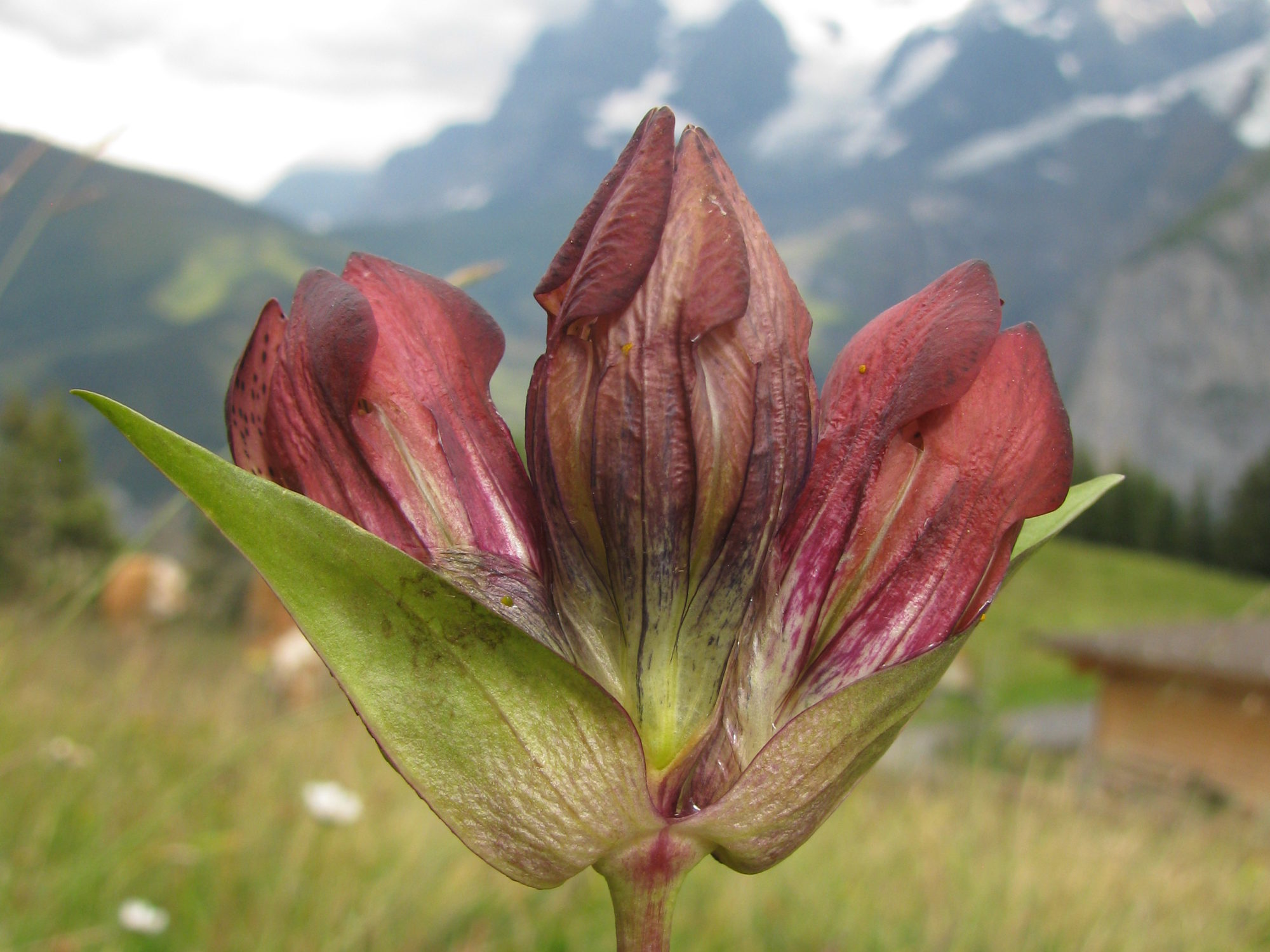My family and I took a trip to Switzerland over the summer. I was blown away by the beauty and the variety of the alpine plants there. Alpine plants grow above the tree line, which was about 10,000 feet in the Alps. The variety of gentians (Gentianaceae) across the Alps was especially amazing. I will be highlighting a few species over the next month.
We were hiking near cow pastures in the Berner Oberland region and I came across a tall gentian with reddish flowers. A quick check of my book, A Field Guide to the Flowers of the Alps (Hoppe, 2012), helped me to identify the plant as a purple gentian (Gentiana purpurea). This gentian was interesting as it was a foot tall, inches taller than any other gentian I had seen in Switzerland. Two identifying characteristics of purple gentians are the reddish purple flowers and the large papery calyces (sepals) below each flower (Hoppe, 2012, A Field Guide to the Flowers of the Alps).

This purple gentian is looking pretty red in the sun. Notice the spots inside of the flowers and the large calyces at the bottom of the flowers (Gentiana purpurea, Gentianaceae)
The purple gentian is in the gentian family, or the Gentianaceae. This family has tubular flowers that are epipetalous, which means the filaments (structures that hold up the pollen-filled anthers) are attached to the petals. The flowers often seem folded or crimped between the petals. Finally, this family usually has opposite leaves, meaning two leaves are attached to the stem at the same place.

This gentian has a pretty nice view of cows and the peaks of Eiger, Mönch and Jungfrau mountains. Notice the opposite leaves (Gentiana purpurea, Gentianaceae)
The purple gentian is found all over Europe, including Austria, France, Germany, Italy, Norway and Sweden. It is considered to be endangered in Sweden and rare in Germany. This may be due to the overharvesting of roots to make bitters (used for gastrointestinal problems and to flavor drinks) (The International Union for Conservation of Nature Red List: Gentiana purpurea).

Good thing a fly is visiting these flowers as alpine plants need all the pollinators they can get! (Gentiana purpurea, Gentianaceae)

Lovely photography!